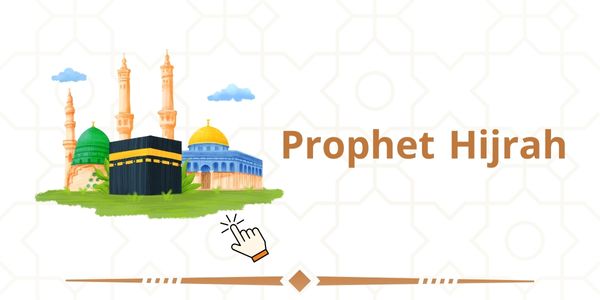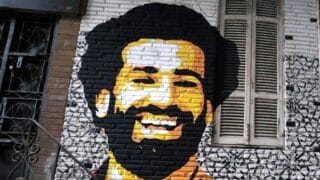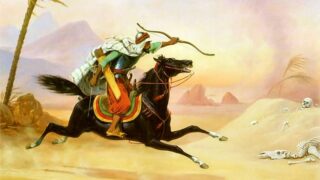The competition to host World Cup has been intense since its first edition in 1930 in Uruguay. It was destined after 92 years of its inception that, Qatar would be the first Arab country and the first country in the Middle East to change the course of the history for organizing and hosting the World Cup after strong competition between Qatar, Australia, Japan, South Korea, and the United States of America (after the withdrawal of Mexico and the rejection of Indonesia’s candidacy). This adds a different worldview to the history of organizing the championship after Asia hosted it for the first time in 2002 in Japan and South Korea, and after South Africa hosted it as the first African country in 2010 in the brown continent.
Everyone knows that the Qatar’s organization of the World Cup is a distinguished milestone in the history of the championship historically, geographically and culturally in many ways, after multiple attempts made by the Arab countries in the Middle East to host it were not successful.
Her Excellency, Mrs Maryam Al-Misned, the Minister for Social Development and Family, said in an interview with Qatar News Agency “QANA”, that this global football event is an opportunity the Arabs and Muslims have long waited for, to reflect their true appearance and pictures to the whole world, away from distortion and stereotypes.
The question that arises here is, what are the characteristics of the local Arab and Islamic culture that the organizers sought to highlight to the guests of Qatar while hosting the first global football event in the region?
First, the specifications of universality and the acceptance of cultural diversity
Life is a beautiful fabric with multiple cultures and human civilizations, and we all know that any global event will necessarily reflect images of these diverse human cultures and civilizations. Therefore, we must first salute and appreciate the deep mentality that accepted this fact, then, I thought about highlighting cultural features and showing them to the guests of Qatar, so that, they can get to know them in terms of history, heritage and local traditions.
We can also identify the convergence between global and local culture with the most splendid images of cultural diversity, harmony, coexistence, and the embodiment of these meanings to the world in reality are as expressed by Dr. Ibrahim Al-Ansaari, the Dean of Faculty of Law, Qatar University that “local values continually remain in the society, whoever quits them, shall quit them with a choice, and he will be held accountable for his choice”.
In addition, the State of Qatar would not have been able to host World Cup, had it not been for its demonstrations of universality and the fulfillment of its standards. The demonstrations of the universality of the State of Qatar are represented in:
– The cultural intellectual domain “Its Intellectuality”.
– The administrative framework characterized by accompaniment and seriousness “Its Management”.
– The infrastructural development “Its Aggregate Infrastructure”.
The rise of the thought of Qatar and its vision gives birth to its ambitious management in ascending to the throne of the world in all fields, including sports. The rise in thought and vision of Qatar as supported by the strength of its serious and honest management provided the required standards that put the country at the forefront of competitions to organize World Cup Championship. In addition, the visible infrastructure became crystal clear to all the organizing authorities, Qatari people and every resident on Qatar’s soil.
Second, the features of the local Arab and Islamic culture in the stadiums
In sum, it is said that all Qatar stadiums reflect the local Arab culture and Islamic civilization as follows:
First: Al-Bayt Stadium, where the opening ceremony and the opening match took place. This stadium was built in the form of a huge tent to cover it entirely. The stadium derived its name from the tent inhabited by the people of the desert in Qatar and the Gulf region throughout history.
Second: Ahmad Bin Ali Stadium, which reflects the Qatari environment. The external shape of this stadium shows the waves of sand, the beauty of the desert and the local flora and fauna.
Third: Al-Janoub Stadium, located in the city of Al-Wakra. The stadium was designed from the sails of traditional Qatari boats to celebrate the ancient history of Al-Wakra city, as a center for hunting and searching for pearls in the past.
Fourth: Khalifa International Stadium, which is connected to the Qatar Olympic and Sports Museum, to show the place’s attachment to the past, history and pride during its journey towards building a bright future.
Fifth: Al-Thumama Stadium, in which Arab architecture is evident. The stadium was designed in the form of a traditional cranium, which is the cap worn under the headband in Arab countries. It indicates the common Arab culture confirming their in-depth civilization, historical and cultural heritage.
Sixth: Education City Stadium, which is a model that blends traditional Islamic architecture with a modern character.
Seventh: Lusail Stadium. This stadium reminds of the traditional Arab lighthouse or lantern, utensils and other pieces of art used in the past in the region.
Eighth: Stadium 974, this place reminds of the ancient maritime and commercial heritage of the State of Qatar. The number 974 not only refers to the international calling code for Qatar, but also symbolizes the number of shipping containers that were used in building the stadium.
Thus, the essence of the event revolved around features of the local Arab and Islamic culture highlighting its civilization.
Third: the features of the local Arab and Islamic culture in the symbols of the World Cup Championship
The selected symbols of the World Cup championship highlight the local culture as reflected in:
– The Well-known World Cup logo that we are watching, consisting of the colors of the Qatar flag; white and reddish brown, reminds the viewer of a number of things from the local culture, such as the traditional woolen shawl which displays the waves of sand and flower ornaments as a reflection of traditional Arabic art and calligraphy.
This philosophy is rare and distinct in its reflection of the local culture compared to the history of the previous championships.
– Creative outlook of the World Cup which symbolizes the traditional headbands in the Gulf region. There is no doubt that, this is part of the clear manifestations of Arab culture in the World Cup, Qatar 2022.
The Official Poster
Among the symbols of the World Cup, is the official billboard welcoming the guests, showing the headband that denotes the local culture accompanied by the word (Come on). Here, the Arabic dictionaries mentioned the following meanings of (come one) as:
Come on: is a call tool, used to call a person from a distance or its related ruling. Its purpose is to alert the invitee to hear your speech.
Come on: is the noun for an imperative verb, which means faster. Perhaps, the closest English translation to it is Come on.
Fourth: Observing the Arab local culture closely with the eye in reality
Some of these manifestations are intentionally created to link the event to the local culture as earlier said, and some of them are an existing local culture for the guests to see and experience them.
In the past, it was said, the news is not like seeing or seeing is believing. Whoever sees and witnesses with his own eyes is not like the one who hears. Qatar’s hosting of the championship opens an opportunity for the guests of Qatar to witness what is not seen in Arab cultures. Where the visitor will see a sentence that reflects the Arab culture by simply visiting the heritage and ancient places. The visitor will see the Arab dress on men, women and children, and not on the television screens.
Qatar’s guests will see the mosques and their fluttering springs and hear the call to prayer in the country, day and night as an opportunity to visit cultural centers that introduce Islam to anyone who wants to embrace it. The organizers have sought to educate visitors about the local culture and set guidelines for this, including: people can generally wear whatever they like. However, they must cover their shoulders and knees when visiting public places. Foreign visitors and residents can wear a variety of styles of clothing and fashion, while Qatari citizens usually wear traditional dress and visitors can wear it, if they wish.
People have understood the host country’s pride in its culture and that it adheres to it, in light of its universality and pluralism.
Thus, the State of Qatar contributed to showing the local Arab and Islamic culture clearly and highlighting aspects of the Arab-Islamic civilization to the whole world. This article heavily relied on the official sources in this regard including the Hukoomi website, the Qatar 2022 website, and the local media. However, there are manifestations other than what was mentioned that express the local culture, many events, activities and contemporary arts that express the local culture and the culture of the participants, indicating the diversity and coexistence in light of pride in Islam and local culture.

















